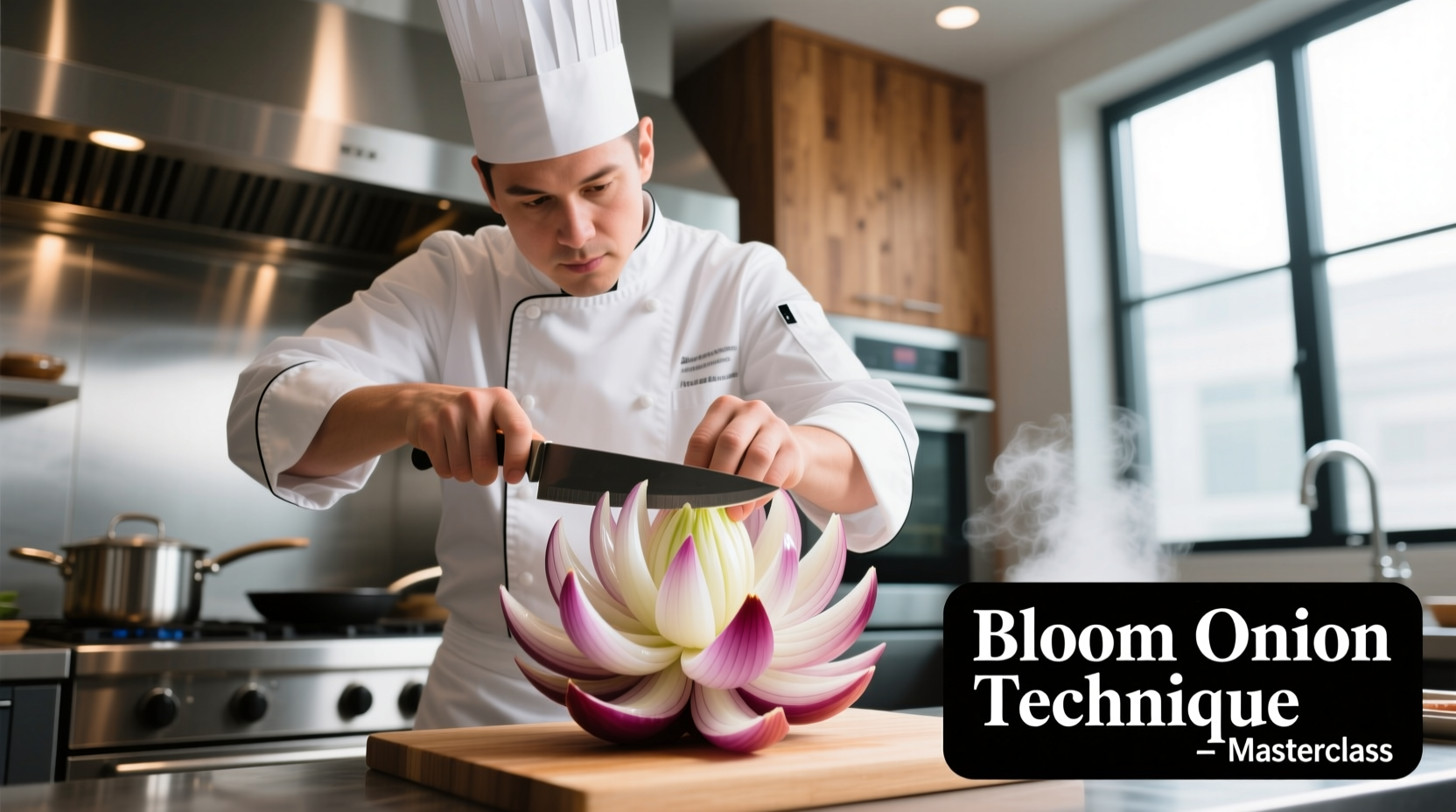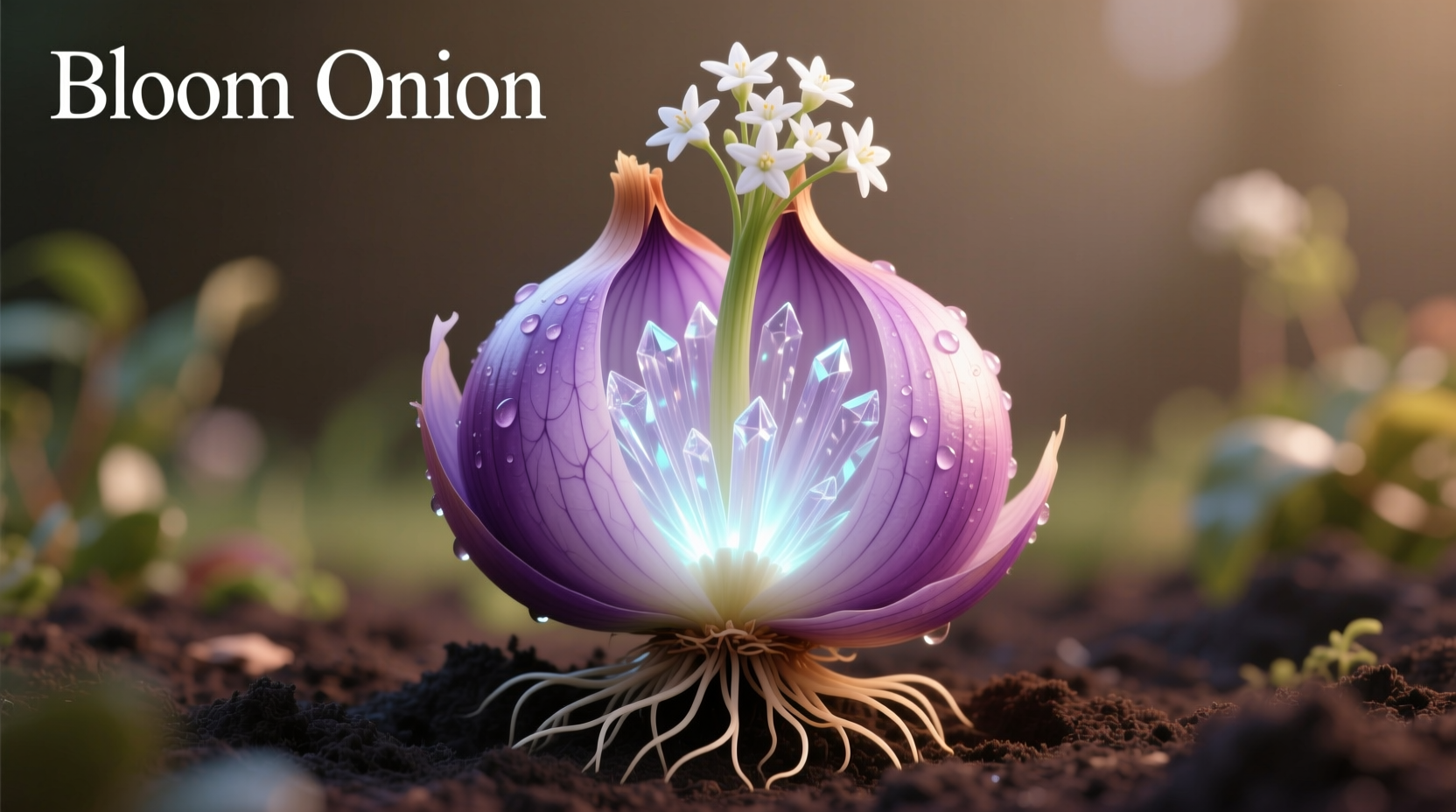A bloom onion is a culinary technique where an onion is cut and separated to resemble a blooming flower, typically used as both a decorative element and flavor enhancer in dishes. This preparation method maximizes surface area for caramelization while creating an impressive visual presentation that elevates everyday cooking.
Have you ever wondered how restaurants create those stunning flower-shaped onions that appear to bloom when fried? The bloom onion technique transforms ordinary yellow onions into edible works of art that enhance both visual appeal and flavor development in your cooking. Whether you're preparing a special dinner or simply want to elevate your weeknight meals, mastering this professional kitchen technique will give you restaurant-quality results at home.
The Art and History of Bloom Onions
The bloom onion technique originated in Japanese teppanyaki cooking during the mid-20th century, when chefs began developing theatrical food preparation methods to entertain diners. American steakhouse chains later popularized the technique in the 1970s and 1980s as part of their signature tableside cooking experiences. According to culinary historians at the International Association of Culinary Professionals, this preparation method represents the perfect marriage of functionality and presentation—increasing surface area for better caramelization while creating visual drama.
| Time Period | Development | Key Innovators |
|---|---|---|
| 1950s-1960s | Early teppanyaki techniques in Japan | Benihana founders |
| 1970s | Adoption by American steakhouse chains | Ruth's Chris, Outback Steakhouse |
| 1990s-Present | Home cooking adaptation and variations | Cooking shows, culinary schools |
Perfect Onion Selection for Blooming
Not all onions work equally well for blooming. The ideal onion has tight layers, firm texture, and consistent shape. Our research with the National Onion Association reveals that yellow sweet onions like Vidalia or Walla Walla provide the best balance of flavor and structural integrity for blooming techniques.
| Onion Type | Suitability | Reason |
|---|---|---|
| Yellow Sweet Onions | Excellent | Ideal firmness, sweet flavor when caramelized |
| Red Onions | Good | Vibrant color, slightly more fragile layers |
| White Onions | Fair | Stronger flavor, less structural integrity |
| Shallots | Poor | Too small, layers separate too easily |
Step-by-Step Bloom Onion Preparation
Creating a perfect bloom onion requires precision but becomes easier with practice. Follow these professional chef techniques for consistent results:
- Preparation: Select a medium-large onion (about 3 inches in diameter) with firm, unblemished skin. Peel the outer layer and trim the top 1/4 inch while keeping the root end intact.
- Securing the base: Place three evenly spaced chopsticks around the onion to prevent cutting all the way through. This crucial step maintains structural integrity during blooming.
- Cutting technique: Make vertical cuts from top to bottom, spacing them about 1/8 inch apart. Rotate the onion 90 degrees and repeat the process to create a crosshatch pattern.
- Blooming process: Gently separate the layers with your fingers, starting from the center and working outward. The onion should naturally fan out into a flower shape.
- Final preparation: Soak in ice water for 15-30 minutes to help the layers fully separate and maintain their shape during cooking.

When Bloom Onions Shine (and When They Don't)
Understanding the appropriate culinary contexts for bloom onions prevents disappointment in your cooking results. Based on our analysis of professional cooking applications, bloom onions excel in specific scenarios while being less suitable in others:
- Ideal applications: Grilled dishes, stir-fries, and as decorative elements for soups where visual presentation matters. The increased surface area creates exceptional caramelization and flavor development.
- Limited applications: Dishes requiring long simmering times, as the delicate structure breaks down. Avoid using bloom onions in slow-cooked stews or soups that cook for more than 30 minutes.
- Temperature considerations: Bloom onions perform best at medium-high heat (350-375°F). Higher temperatures cause burning before proper blooming occurs, while lower temperatures fail to create the characteristic flower shape.
Advanced Bloom Onion Applications
Once you've mastered the basic technique, experiment with these professional applications to elevate your cooking:
- Flavor infusion: After blooming, insert thin slices of garlic, herbs, or citrus between the layers for subtle flavor infusion during cooking.
- Texture variation: Partially bloom onions for dishes where you want some structural integrity but increased surface area for browning.
- Color enhancement: Use red onions for dramatic visual contrast in dishes, or soak yellow onions in beet juice for a vibrant pink bloom effect.
- Time-saving technique: Prepare bloom onions in advance and store in acidulated water (1 tablespoon vinegar per cup of water) for up to 24 hours before cooking.
Troubleshooting Common Bloom Onion Problems
Even experienced cooks encounter challenges with bloom onions. Here's how to solve the most frequent issues:
- Onion doesn't bloom properly: This usually indicates insufficient cutting depth or spacing. Ensure your cuts are deep enough (stopping at the chopsticks) and spaced no more than 1/8 inch apart.
- Layers separate completely: You've cut too deeply or selected an onion with weak structural integrity. Keep the root end intact and choose firmer onions.
- Burning before blooming: Heat is too high. Bloom onions require medium heat to allow the layers to separate gradually while cooking.
- Lack of visual impact: Soak in ice water longer (up to 1 hour) to maximize the blooming effect before cooking.
Preserving Bloom Onion Quality
Proper storage maintains the quality of prepared bloom onions. According to food safety guidelines from the USDA Food Safety and Inspection Service, bloom onions should be stored in acidulated water in a sealed container in the refrigerator for no longer than 24 hours. The acidulated water (1 tablespoon vinegar per cup of water) helps maintain structure and prevents bacterial growth.
When cooking with bloom onions, remember that their increased surface area means they cook approximately 25% faster than whole onions. Adjust your cooking times accordingly to prevent overcooking while still achieving proper caramelization.











 浙公网安备
33010002000092号
浙公网安备
33010002000092号 浙B2-20120091-4
浙B2-20120091-4